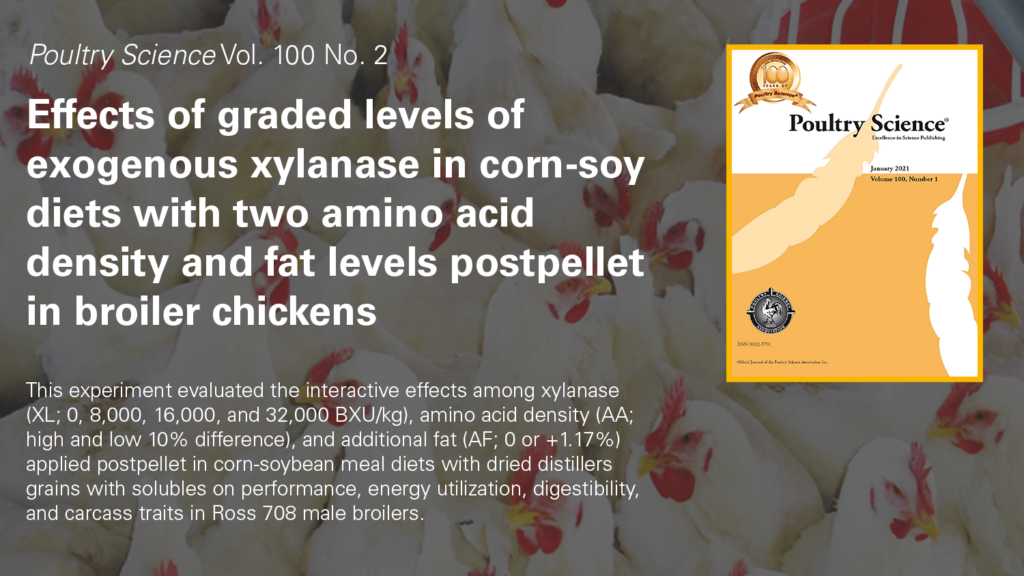New Research on Xylanase, Other Feed Attributes in Broilers
go.ncsu.edu/readext?778599
en Español / em Português
El inglés es el idioma de control de esta página. En la medida en que haya algún conflicto entre la traducción al inglés y la traducción, el inglés prevalece.
Al hacer clic en el enlace de traducción se activa un servicio de traducción gratuito para convertir la página al español. Al igual que con cualquier traducción por Internet, la conversión no es sensible al contexto y puede que no traduzca el texto en su significado original. NC State Extension no garantiza la exactitud del texto traducido. Por favor, tenga en cuenta que algunas aplicaciones y/o servicios pueden no funcionar como se espera cuando se traducen.
Português
Inglês é o idioma de controle desta página. Na medida que haja algum conflito entre o texto original em Inglês e a tradução, o Inglês prevalece.
Ao clicar no link de tradução, um serviço gratuito de tradução será ativado para converter a página para o Português. Como em qualquer tradução pela internet, a conversão não é sensivel ao contexto e pode não ocorrer a tradução para o significado orginal. O serviço de Extensão da Carolina do Norte (NC State Extension) não garante a exatidão do texto traduzido. Por favor, observe que algumas funções ou serviços podem não funcionar como esperado após a tradução.
English
English is the controlling language of this page. To the extent there is any conflict between the English text and the translation, English controls.
Clicking on the translation link activates a free translation service to convert the page to Spanish. As with any Internet translation, the conversion is not context-sensitive and may not translate the text to its original meaning. NC State Extension does not guarantee the accuracy of the translated text. Please note that some applications and/or services may not function as expected when translated.
Collapse ▲
New research in the journal Poultry Science examines the impact of xylanase, amino acid density and fat levels on broiler chickens.
The research team, including corresponding author Dr. Edgar Oviedo-Rondón, formulated diets and examined the impacts on broiler performance, energy utililization, digestibility and carcass traits.
from the abstract
This experiment evaluated the interactive effects among xylanase (XL; 0, 8,000, 16,000, and 32,000 BXU/kg), amino acid density (AA; high and low 10% difference), and additional fat (AF; 0 or +1.17%) applied postpellet in corn-soybean meal diets with dried distillers grains with solubles on performance, energy utilization, digestibility, and carcass traits in Ross 708 male broilers.
The research is available open access online – read Effects of graded levels of exogenous xylanase in corn-soy diets with two amino acid density and fat levels postpellet in broiler chickens: live performance, energy utilization, digestibility, and carcass characteristics.


